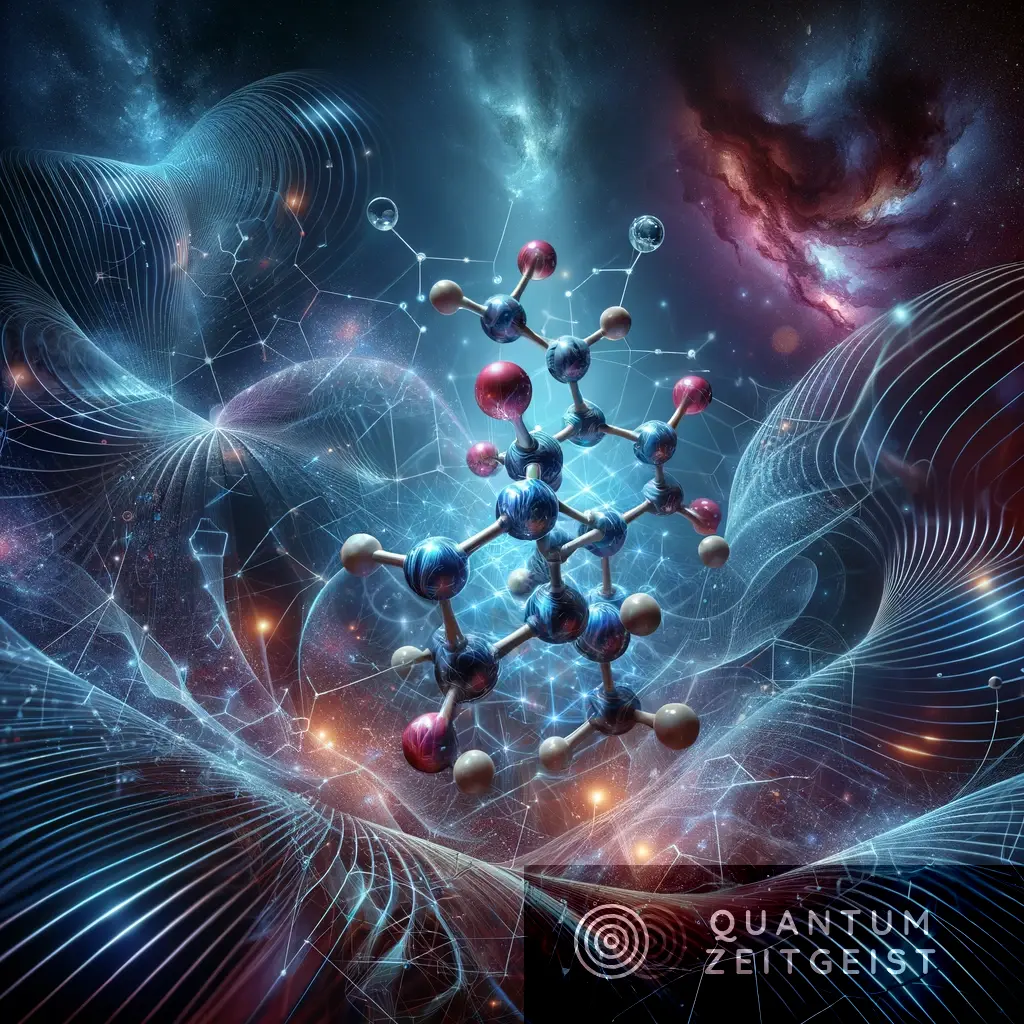Researchers at the University of Rochester, led by Ignacio Franco, have developed a strategy to understand and control quantum decoherence in molecules. This process, where the superposition of quantum states breaks down, is a significant challenge for emerging quantum technologies. The team’s method uses resonance Raman experiments to extract the spectral density for molecules, revealing how fast decoherence occurs and which part of the chemical environment is responsible. The research, published in the Proceedings of the National Academy of Sciences, could help design molecules with specific quantum coherence properties, aiding the development of quantum technologies.
Understanding Quantum Decoherence in Molecules
Researchers from the University of Rochester have developed a strategy to understand how quantum coherence is lost for molecules in solvent with full chemical complexity. This process, known as quantum decoherence, is a significant challenge for emerging quantum technologies. Quantum superpositions, a property where particles can exist in multiple states simultaneously, breaks down when interacting with its surrounding environment. The team’s findings can be used to design molecules with custom quantum coherence properties, laying the chemical foundation for emerging quantum technologies.
The Role of Spectral Density in Quantum Decoherence
To design molecules with specific quantum coherence properties, scientists need to understand and control quantum decoherence. This requires knowledge of the “spectral density,” a quantity that summarizes how fast the environment moves and how strongly it interacts with the quantum system. Until now, accurately quantifying this spectral density to reflect the intricacies of molecules has been a challenge. However, the team led by Ignacio Franco, an associate professor of chemistry and of physics at the University of Rochester, has developed a method to extract the spectral density for molecules in solvent using simple resonance Raman experiments.
The Breakthrough in Quantum Decoherence Research
The breakthrough in understanding quantum decoherence came when the team recognized that resonance Raman experiments provided all the necessary information. These experiments are commonly used to investigate photophysics and photochemistry, but their utility for quantum decoherence had not been appreciated. The key insights emerged from discussions with David McCamant, an associate professor in the chemistry department at Rochester and an expert in Raman spectroscopy, and with Chang Woo Kim, now on the faculty at Chonnam National University in Korea and an expert in quantum decoherence, while he was a postdoctoral researcher at Rochester.
Practical Applications of the Research
The team used their method to show how electronic superpositions in thymine, one of the building blocks of DNA, unravel in just 30 femtoseconds following its absorption of UV light. They found that a few vibrations in the molecule dominate the initial steps in the decoherence process, while solvent dominates the later stages. They also discovered that chemical modifications to thymine can significantly alter the decoherence rate, with hydrogen-bond interactions near the thymine ring leading to more rapid decoherence.
Future Implications of the Study
The team’s research opens the way toward understanding the chemical principles that govern quantum decoherence. “We are excited to use this strategy to finally understand quantum decoherence in molecules with full chemical complexity and use it to develop molecules with robust coherence properties,” says Franco. This could potentially guide the modern design of molecules for medicine, agriculture, and energy applications, and lay the chemical foundation for emerging quantum technologies.
“Chemistry builds up from the idea that molecular structure determines the chemical and physical properties of matter. This principle guides the modern design of molecules for medicine, agriculture, and energy applications. Using this strategy, we can finally start to develop chemical design principles for emerging quantum technologies,” says Ignacio Gustin, a chemistry graduate student at Rochester and the first author of the study.
“We are excited to use this strategy to finally understand quantum decoherence in molecules with full chemical complexity and use it to develop molecules with robust coherence properties,” says Franco.
Summary
Scientists have developed a method to understand and control quantum decoherence, a process that disrupts the simultaneous existence of multiple states in quantum mechanics, by modifying a molecule’s chemical structure. This breakthrough, which utilises resonance Raman experiments, could pave the way for designing molecules with specific quantum coherence properties, thereby advancing the development of quantum technologies.
- Researchers from the University of Rochester have developed a strategy to understand and control quantum decoherence in molecules, a significant challenge in the field of quantum mechanics.
- The team, led by Ignacio Franco, an associate professor of chemistry and physics, published their findings in the Proceedings of the National Academy of Sciences.
- The research could help design molecules with specific quantum coherence properties, a crucial step for practical quantum applications in computing, communication, and sensing.
- The team used resonance Raman experiments to extract the spectral density for molecules in solvent, a method that captures the full complexity of chemical environments.
- The research also involved Ignacio Gustin, a chemistry graduate student, David McCamant, an associate professor in the chemistry department, and Chang Woo Kim, an expert in quantum decoherence.
- The team demonstrated their method on thymine, a building block of DNA, showing how electronic superpositions unravel in just 30 femtoseconds following UV light absorption.
- The research could lead to understanding the chemical principles that govern quantum decoherence and the development of molecules with robust coherence properties.




